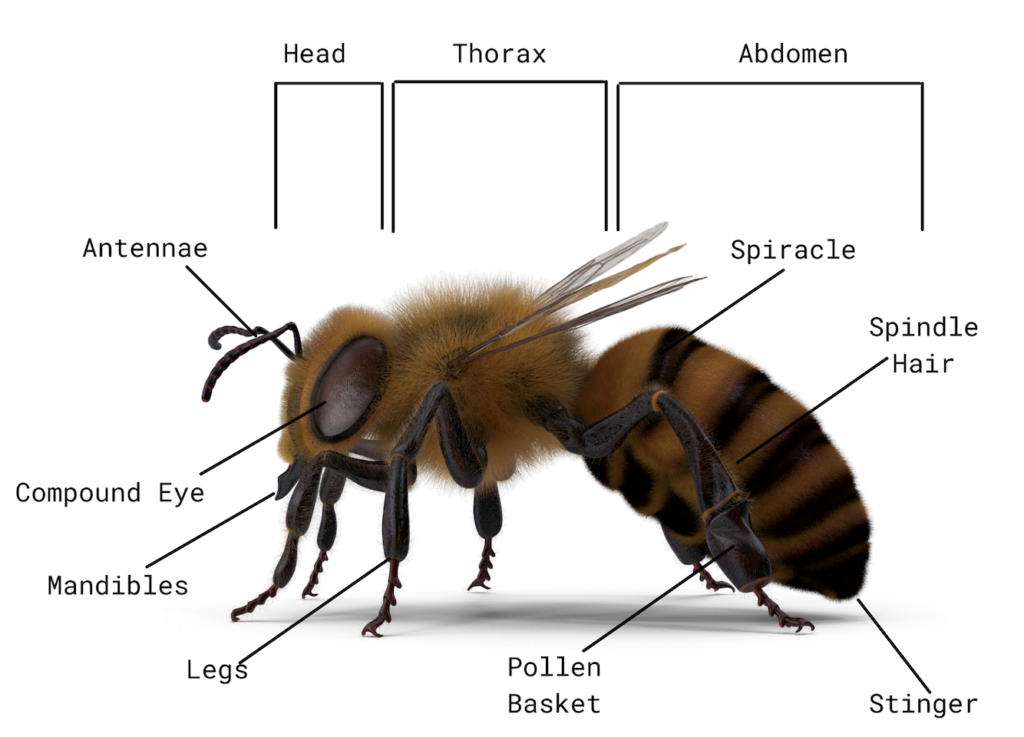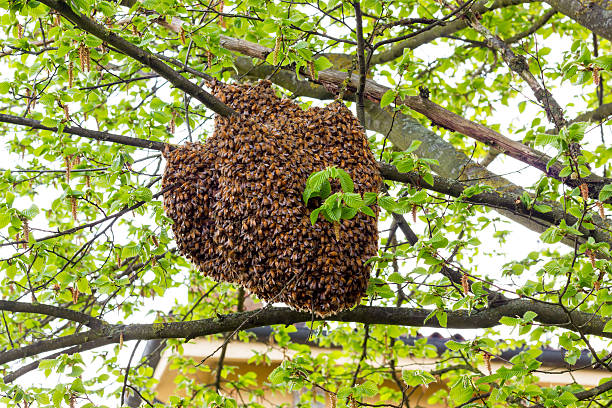Introduction of Honey Bee
Subject: Science

Overview
Bees, a member of the Arthropoda phylum, live in hives constructed by farmers. The raising of bees for profit is known as apiculture. Honey bees, including queen, worker, and drone bees, are essential for honey production. Beekeeping has evolved over time and is now an agricultural enterprise. Queen bees lay eggs and regulate bee activity, while worker bees feed larvae royal jelly to create a new queen. Drone bees, smaller than queen bees, conceive the queen bee and are less active. Worker bees are responsible for gathering nectar, building the hive, and guarding the colony.
Rupa was irrigating her garden's flowers. Some insects buzzing at that precise moment caught her attention. She started to examine the insects closely to find out why they had been buzzing. She realized then that those were, in fact, honey bees. They were soaring and consuming flower nectar. Rupa observed the bees intently for a while. The bees, she saw, were perching on flowers for a while before taking off. She followed them in an attempt to see where they were heading and discovered the bees were seated in a hive that had been constructed in a nearby tree. She witnessed many kinds of bees in the hive while observing it from a distance.
Have you ever observed a colony of bees in your neighborhood or at home? Talk about the following inquiries in light of your knowledge or the previously described occurrence:
- In order to survive, what do honeybees eat?
- Do all the bees in a hive belong to the same type?
- What knowledge may be gained about bees?
- Do bees solely benefit people by making honey, or do they also assist us in other ways?
An insect known as a bee lives freely within a particular kind of hive that it has constructed for itself. It is a member of the Arthropoda phylum. Farmers build fake hives for their honeybees while they are cultivating them. The social insects known as honey bees reside in enormous colonies. Within a hive, there are three different kinds of honey bees: queen, worker, and drone. The bee colony possesses a great degree of discipline and comprehension among its members. There is also a significant degree of division of labor among them. The bee colony is made up of extremely disciplined, diligent workers who never stop working. In order to produce honey, honeybees gather pollen and nectar.
Since ancient times, people have been cultivating bees using conventional techniques. Beekeeping has been practiced since the 20th century, and its purposes have expanded beyond honey production to include pollination and wax manufacturing.  In order to increase honey production, beekeeping is now conducted as an agricultural enterprise using contemporary hives. The raising of bees for profit is known as apiculture. Different research is conducted on bees specifically for commercial bee farming. As a subfield of entomolog (the science of insects), melittology, sometimes known as apicology, is the study of bees.
In order to increase honey production, beekeeping is now conducted as an agricultural enterprise using contemporary hives. The raising of bees for profit is known as apiculture. Different research is conducted on bees specifically for commercial bee farming. As a subfield of entomolog (the science of insects), melittology, sometimes known as apicology, is the study of bees.
A bee's size typically falls between 9 and 20 mm in length. Their body is segmented into a head, thorax, and abdomen, just like other insects. They have paired antennae, paired mouthparts, and paired compound eyes in their skull. Their antennas aid in their ability to sense environmental cues. Compound eyes provide sight without head rotation. The thorax is divided into three sections. Two legs emerge from each section. Since their legs are joined, they belong to the phylum Arthropoda. The development of two wings from the first two segments of the thorax facilitates their ability to fly long distances. There are nine segments in the abdomen, although only six are visible in adult females and seven in adult males.
There are three different types of bees in a hive: worker, drone, and queen bees. Every participant has a unique one, which is examined here:

- Queen Bee
The biggest and longest bee in the beehive is the queen. Compared to others, its head is rounder and smaller. It has a short, hair-covered proboscis. The end of the abdomen has a sting. In most cases, the hive contains just one queen. Laying eggs is its primary job.It regulates each bee's activity within the hive based on the circumstances. Its body releases pheromones, which are unique aroma compounds. It draws men for mating with the aid of this. Pheromones are similarly utilized for communication and hive position detection. At two to five years old, a queen bee has the longest life span in the hive. Worker bees feed larvae royal jelly to create a new queen.
- Drone Bee
While the worker bee is bigger, hairy, and black in color, the drone bee is smaller than the queen. It lacks pollen baskets, stingers, and glands that produce wax. In the hive, it is the least active bee. Even worker bees feed it. Its job is to conceive the queen bee. The drone is haploid. While the worker and queen are diploid, with 32 chromosomes, they only have 16. Unfertilized eggs are used to create drones. Parthenogenesis is the term for this procedure. Their lifespan is limited to around two months.
- Worker Bee
They are the hive's tiniest bees. Their mouthparts are designed for chewing and lapping, and their body composition is unique. Bee workers put forth a great deal of labor. Their legs are heavily hair-covered. Pollen baskets are also seen on legs. They carry the pollen basket full of collected pollen to the hive. Worker bees are responsible for gathering nectar, building the hive, tending to the young, guarding the colony, and other tasks. A hive has between 20,000 and 80,000 worker bees in it. Worker bees have a six-week to six-month lifespan.
Things to remember
- Within a specific type of hive that it has built for itself, the insect known as a bee lives freely.
- The raising of bees for profit is known as apiculture.
- A hive contains three distinct species of bees: worker, drone, and queen bees.
- The life span of a queen bee is generally two to five years.
- The lifespan of a drone bee is limited to around two months.
- The lifetime of a worker bee is six weeks to six months.
© 2021 Saralmind. All Rights Reserved.


 Login with google
Login with google